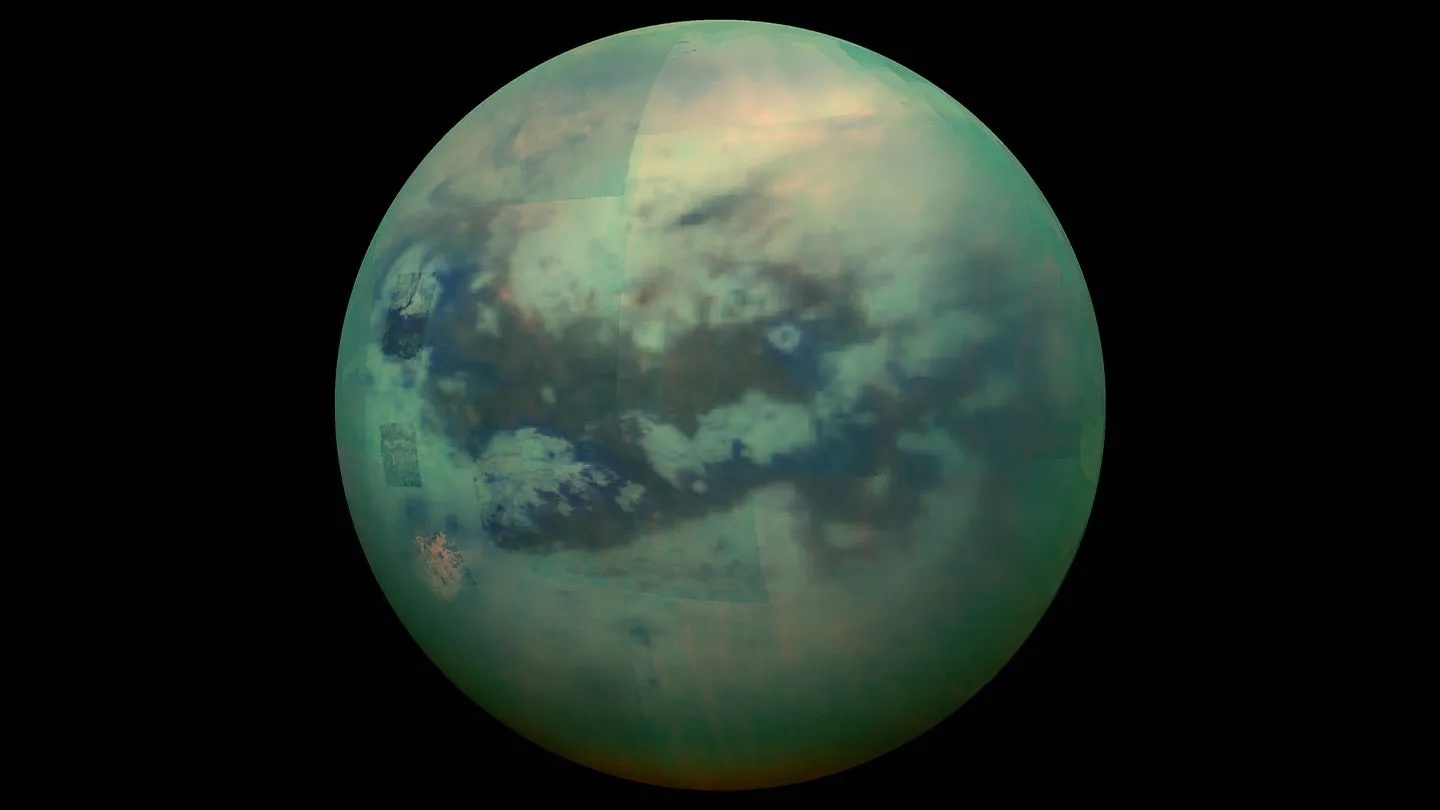15.03.2024
The origin of the rippling sands has long been a mystery

Titan’s dunes (dark regions) can be observed in this infrared composite of the largest of Saturn’s moons, which was taken in 2015 by NASA’s now-defunct Cassini spacecraft.
NASA
THE WOODLANDS, TEXAS — The dark dunes of Titan, Saturn’s largest moon, could have fallen from space.
More than enough cometary material may have struck Titan to have formed its vast dune fields, planetary scientist William Bottke reported March 12 at the Lunar and Planetary Science Conference. Computer simulations suggest that the enigmatic drifts formed from objects hailing from the primordial Kuiper Belt, a modern source of comets beyond the orbit of Neptune. The proposed scenario could also explain the presence of similar material observed on other worlds, said Bottke, of the Southwest Research Institute in Boulder, Colo.
The nature of Titan’s sand has long been pondered. Beneath the moon’s tangerine skies drift some 15 million square kilometers of dusky dunes (SN: 5/23/06). These waves of sand are about as big as the massive dunes found in the United Arab Emirates, says planetary geologist Jani Radebaugh of Brigham Young University in Provo, Utah. Those earthbound mounds are also where the recent Dune films were shot (SN: 3/1/24).
The popular hypothesis contends that Titan’s undulating sands consist of organic particles produced by solar irradiation of its hazy atmosphere (SN: 2/1/19). After these micron-sized particles fall to the surface, they somehow grow larger into sand-sized grains that can form dunes. But it’s not clear how exactly that growth occurs. What’s more, laboratory tests show that the organic particles may break apart too easily to endure being buffeted into dunes, Bottke said.
He and his colleagues propose another scenario, one that begins early in the history of the solar system, roughly 4 billion years ago.
One of the most popular theories for the solar system’s evolution says that the giant planets migrated from where they formed to their current positions (SN: 10/20/23). During this time, those planets are thought to have passed through the Kuiper Belt. That grand reshuffling would have led to the bombardment of Titan and other moons by comets. But many comets would have also smashed together, pulverizing them into tiny particles.
We know a surprising amount about these particles, Bottke said, because many have struck spacecraft and Earth. They’re resilient enough to survive passing through our atmosphere. And they’re dark and often around 200 microns wide, just the right size to build dark dunes on Titan.

This radar image of dunes on Saturn’s moon, Titan, was captured in 2009 by NASA’s Cassini spacecraft.JPL/NASA
